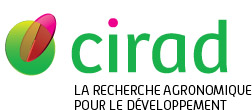Avadi Angel, Dabat Marie-Hélène, Sfez Paul, Saïd Mahamoudou. 2024. Statistics-based LCA of artisanal fishing in the Union of the Comoros: Efficiency challenges. International Journal of Life Cycle Assessment, 29 (9) : 1639-1651.
|
Version publiée
- Anglais
Accès réservé aux personnels Cirad Utilisation soumise à autorisation de l'auteur ou du Cirad. 613075.pdf Télécharger (1MB) | Demander une copie |
Résumé : Purpose: The Comorian fisheries land around 20 000 t fish annually, for the domestic market. The fleet is divided into a handful of segments, all of them artisanal in nature and practices, using a variety of gear and fishing strategies. Some fishers use fish aggregating devices installed in the territorial waters. This study aims at understanding the comparative environmental impacts of the Comorian fisheries segments, as well as the efficiency of fisheries operations as compared with similar fisheries and alternative sources of animal proteins for the domestic population. Material and methods: This study applied life cycle assessment to estimate, comparatively, the environmental impacts of the different types of fishing unit, segregated by island, boat size and gear, as well as against alternative sources of protein for the Comorian population and neighbouring artisanal fisheries. Results and discussion: Comorian fisheries, whose landings are dominated by tunas, seem less efficient than other regional small-scale fisheries and feature higher environmental impacts than alternative animal protein sources available in the country. The widely adopted practice of trolling, highly energy intensive, dominates Comorian fisheries. Passive gear-based fishing strategies also feature higher than expected energy-related impacts. The environmental benefits of using fish aggregating devices are not clear. The impacts on biodiversity are a cause for concern, especially in the reef areas off Mohéli. Conclusions: Given the cost of public investment on FADs, the fragility of the devices (a FAD can be lost or become ineffective fairly quickly if it is not maintained), and the supposedly significant impact of the FAD network on domestic tuna fishing yields, data on FADs is essential for decision-makers. Other elements for fisheries decision-makers, which are currently lacking, include the monitoring of octopus and reef fish stocks, the effect of co-management agreements on stocks and ecosystems, and a sustainable data collection strategy. The latter would be helpful to better understand the relative importance of fishing strategies, particularly FADs, in relation to fuel intensity. Improving the Comorian fishery's efficiency would be a key driver to improve its sustainability.
Mots-clés Agrovoc : impact sur l'environnement, pêche artisanale, dispositif de concentration de poissons, évaluation de l'impact, pêches, pêcherie de thon, pêche à la traîne, engin de pêche, thon, pêche à la palangre, navire de pêche, flottille de pêche, pêcheur, matériaux des engins de pêche
Mots-clés géographiques Agrovoc : Comores
Mots-clés libres : Trolling, Longlining, Fish aggregating devices, Fleet segmentation, Tuna, Large pelagics
Agences de financement européennes : European Commission
Projets sur financement : (EU) Value Chain Analysis for Development Project
Auteurs et affiliations
-
Avadi Angel, CIRAD-PERSYST-UPR Recyclage et risque (CIV)
 ORCID: 0000-0002-8114-916X - auteur correspondant
ORCID: 0000-0002-8114-916X - auteur correspondant
-
Dabat Marie-Hélène, CIRAD-ES-UMR ART-DEV (FRA)
 ORCID: 0000-0002-9938-1792
ORCID: 0000-0002-9938-1792
- Sfez Paul
- Saïd Mahamoudou, Université des Comores (COM)
Source : Cirad-Agritrop (https://agritrop.cirad.fr/613075/)
[ Page générée et mise en cache le 2025-09-28 ]




